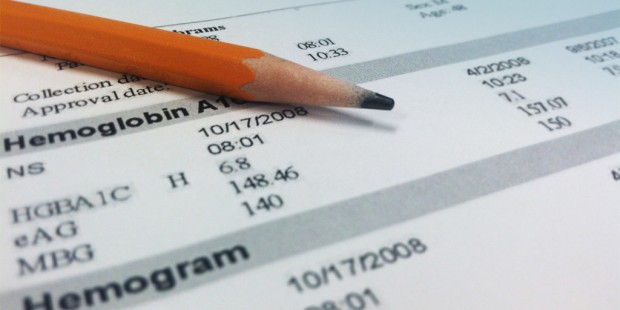FreeStyle Libre FGM in Patients with Type 2 Diabetes
Instant glucose measurement is a great tool for T2D glucose management but ‘clinical inertia’ and insurance rules prevent better care

Taking time to test your blood sugar, as well as the overall idea of having to prick your finger regularly, can be a major deterrent for some patients with type 2 diabetes. Sometimes people don’t get informed about just how much their blood sugar levels fluctuate and believe that if their blood sugar was within their goal range in the morning or at their quarterly check-up, it’s likely in that range all the time.
A 2019 study from the LECOM School of Pharmacy in Florida set out to determine if giving patients with type 2 diabetes the use of Abbott’s FreeStyle Libre “flash glucose monitoring” or “FGM” device might enable them to check their blood sugars more often.
The study focused specifically on patients with type 2 who take daily injections of insulin since these patients are more likely to experience greater fluctuations in their blood sugar sugars.
FreeStyle FGM vs. Traditional Blood Glucose Testing
“The study was an open-label randomized controlled trial over ten weeks, with 101 total patients with type 2 diabetes, 53 in the intervention group and 48 in the control group,” explains the report.
The intervention group was equipped with the FreeStyle Libre FGM which involves a small patch with a sensor inserted into the subcutaneous tissue of your skin. When scanned, the transmitter reports a glucose level. They were instructed to scan their FGM every 8 hours.
The control group was instructed to continue using traditional glucose testing at least 4 times per day.
Both groups were instructed to use traditional glucose testing if they felt symptoms of low blood sugars.
The Diabetes Treatment Satisfaction Questionnaire (DTSQ) was used to evaluate the diabetes treatment regimen in terms of overall satisfaction, convenience, flexibility, understanding of diabetes, willingness to recommend to others, and willingness to continue treatment.
Study Results
The overall “patient satisfaction” in both groups was high, but 87.5% of the intervention group was very satisfied with the FreeStyle FGM system, and the remaining 12.5% were moderately satisfied.
- “The intervention group felt that using FGM system provided more flexibility, and decreased their frequency of low blood sugars. Overall, they said they’d recommend it to others, too.
- “Furthermore, 39.2% of the intervention group had a decrease in HbA1C of at least 1 percent, with only 18.6% in the control group. The number of patients with an HbA1C reduced by at least 1% in the intervention group was more than double seen in the control group.”
The authors acknowledged the power of this study might have been undermined due to patients not completing the questionnaires.
- Also, the inclusion criteria were expanded, accepting a wider range of HbA1C values (7.4% – 10.2%), giving a lower mean HbA1C in the control group, but that did not adversely affect the data.
- Future studies should similarly evaluate the FreeStyle Libre 2 system and determine any improved effects on glycemic control.
Overall, the study recommends discussing FGM technology with patients who are open to change and willing to learn new methods of improving their blood sugar levels.
Could the FGM Device Improve “Clinical Inertia” in the Diabetes Population?
Whether you’re measuring your blood sugar levels with new technology or an old-school glucose meter and test strips, ‘clinical inertia’ is an ongoing challenge the healthcare system faces with the type 2 diabetes patient population.
In a 2018 study funded by Sanofi-Aventis, “clinical inertia” is defined as a “delay in treatment intensification” by healthcare providers even when a patient’s blood sugar levels continue to be well above a safe and healthy range.
In layman’s terms, the patient’s blood sugar levels aren’t improving but their healthcare team doesn’t make any significant changes in their treatment protocol to compensate.
This means the patient continues to live with harmful high blood sugar levels, which increases their likelihood of developing common complications like retinopathy, kidney disease, and neuropathy that will impact their sight, kidney health, fingers and toes, and their overall life expectancy.
Adding further to the problem, the percent of patients with type 2 diabetes who fall victim to clinical inertia is reportedly rising despite the ever-growing list of medications and devices designed to help improve blood sugar levels.
Can a device like the FreeStyle Libre FGM that makes it easier to check your blood sugar address ‘clinical inertia’ in patients with type 2 diabetes?
- Probably not, since the patients most likely to sign-up for using the FreeStyle FGM are patients who are already quite engaged in their self-care, and already taking insulin.
- The majority of the type 2 diabetes population is struggling with denial and basic diabetes care, so expecting them to sign-up for a device that is attached to your body 24/7 isn’t likely.
Clinical inertia is not the fault of patients
Clinical inertia reflects structural flaws in our current healthcare system, especially when you take into account how many medications and devices exist today to help improve blood sugar management.
For example, diabetes education is limited to only the first year after diagnosis, whereas:
- It’s well-known that many patients struggle with denial during that first year, which means that paid-for education that is limited to the first year is poorly timed.
- Diabetes education should be an ongoing project between a patient and their healthcare team, giving them years to gradually evolve their understanding and habits around food, exercise, diabetes, and overall self-care.
- Communication and overall cohesive cooperation between patient, doctor, diabetes educator, and health insurance seldom work smoothly or in unison.
The FreeStyle Libre improves diabetes management in those willing and able to use it, but the large majority of the type 2 diabetes population needs a healthcare system that’s designed to guide and support them at a realistic pace throughout their life with diabetes.





